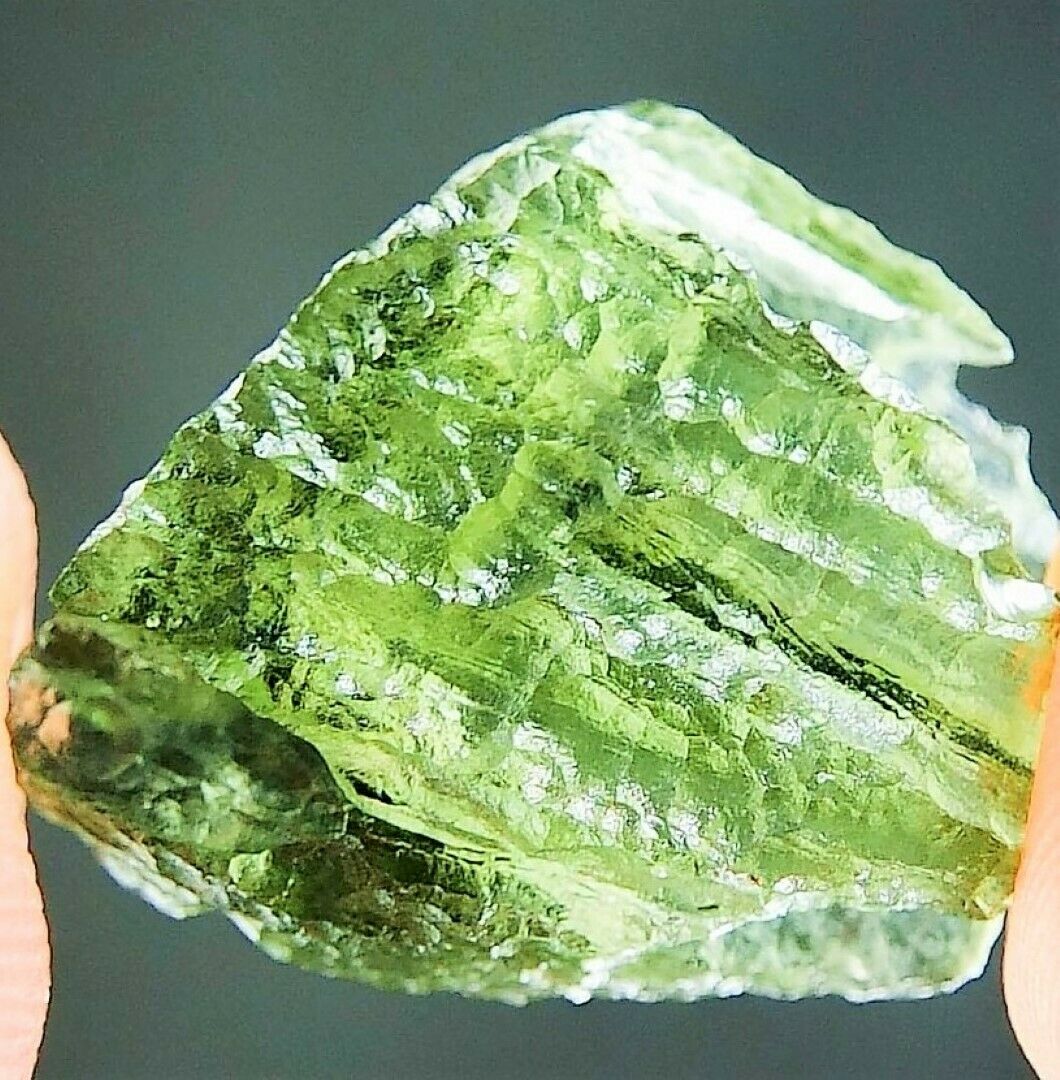-40%
Meteorite**Chelyabinsk; LL5**0.798 gram Oriented Witnessed Fall!! Feb,15 2013
$ 4.74
- Description
- Size Guide
Description
Hello up for sale is the world famous witnessed fall Chelyabinsk classified as a LL5. This broken oriented fragment weighs 0.798 grams and has fresh fusion crust with a faint iridescent purple color, and a extremely gorgeous interior matrix exposed. The Chelyabinsk meteor was a small asteroid — about the size of a six-story building — that broke up over the city of Chelyabinsk, Russia, on Feb. 15, 2013. The blast was stronger than a nuclear explosion, triggering detections from as far away as Antarctica. The shock wave it generated shattered glass and injured about 1,200 people. Some scientists think the meteor was so bright it may have briefly outshone the sun. This lot comes with my COA card and display case, thanks for your interest and take care.Chelyabinsk
Name: Chelyabinsk
This is an OFFICIAL meteorite name.
Abbreviation: There is no official abbreviation for this meteorite.
Observed fall: Yes
Year fell: 2013
Country: Russia
Mass:help 1 t
Classification
history:
Meteoritical Bulletin: MB 102 (2013) LL5
Recommended: LL5
This is 1 of 3156 approved meteorites classified as LL5.
Search for other: LL chondrites, LL chondrites (type 4-7), Ordinary chondrites, and Ordinary chondrites (type 4-7)
Comments: Approved 18 Mar 2013
Revised 14 Feb 2014: Updated mass and described recovery
Writeuphelp
Writeup from MB 102:
Chelyabinsk 54°49’N, 61°07’E (approximate centroid)
Chelyabinskaya oblast’, Russia
Fell: 15 Feb 2013; 3:22 UT
Classification: Ordinary chondrite (LL5)
History: At 9:22 a.m. (local time) on February 15, 2013, a bright fireball was seen by numerous residents in parts of the Kurgan, Tyumen, Ekaterinburg and Chelyabinsk districts. Images of the fireball were captured by many video cameras, especially in Chelyabinsk. Residents of the Chelyabinsk district heard the sound of a large explosion. The impact wave destroyed many windows in Chelyabinsk and surrounding cities. Many people were wounded by glass fragments. A part of the roof and a wall of a zinc plant and a stadium in Chelyabinsk were also damaged. Numerous (thousands) stones fell as a shower around Pervomaiskoe, Deputatsky and Yemanzhelinka villages ~40 km S of Chelyabinsk. The meteorite pieces were recovered and collected out of snow by local people immediately after the explosion. The snow cover was about 0.7 m deep. The falling stones formed holes surrounded by firm snow. Largest stones reached the frozen soil. A stone may have broken the ice of Chebarkul Lake, located 70 km W of Chelyabinsk. Small meteorite fragments were found around the 8 m hole in the ice but divers did not find any stones on the lake bottom.
Physical characteristics: The meteorite stones and fragments are from 100 kg and perhaps > 500 kg. Fusion crusted stones are common. The fusion crust is black or brown and fresh. Broken fragments are rare. The interior of the stones is fresh but in some pieces there is evidence for weak oxidation of metal grains.
Petrography: (D.D. Badyukov and M.A. Nazarov, Vernad). The majority (2/3) of the stones are composed of a light-colored lithology with a typical chondritic texture. Chondrules (~63%) are readily delineated and set within a fragmental matrix. The mean chondrule diameter is 0.93 mm. The chondrule glass is devitrified. The main phases are olivine and orthopyroxene. Olivine shows mosaicism and planar fractures. Rare grains of augite and clinobronzite are present. Small and rare feldspar grains show undulatory extinction, planar deformation features, and are partly isotropic. Troilite (4 vol.%) and FeNi metal (1.3 vol.%) occur as irregularly shaped grains. Accessory minerals are chromite, ilmenite, and Cl-apatite. A significant portion (1/3) of the stones consist of a dark, fine-grained impact melt containing mineral and chondrule fragments. Feldspar is well developed and practically isotropic. No high-pressure phases were found in the impact melt. There are black-colored thin shock veins in both light and dark lithologies.
Geochemistry: (M.A. Nazarov, N.N. Kononkova, and I.V. Kubrakova, Vernad). Mineral chemistry: Olivine Fa 27.9±0.35, N=22; orthopyroxene Fs22.8±0.8Wo1.30±0.26, N=17; feldspar Ab86; chromite Fe/Fe+Mg=0.90, Cr/Cr+Al=0.85 (at.%). Major element composition of the light lithology (XRF, ICP-AS, wt%): Si=18.3, Ti=0.053, Al=1.12, Cr=0.40, Fe=19.8, Mn=0.26, Ca=1.43, Na=0.74, K=0.11, P=0.10, Ni=1.06, Co=0.046, S=1.7. Atomic ratios of Zn/Mn × 100=1.3, Al/Mn=8.8. The impact melt lithology has almost the same composition but it is distinctly higher in Ni, Zn, Cu, Mo, Cd, W, Re, Pb, Bi (ICP-MS).
Classification: Ordinary chondrite (LL5), shock stage S4, weathering W0.
Specimens: About 400 stones weighing 3.5 kg in total and a few thin sections are in Vernad.
Writeup from MB 103:
Chelyabinsk, recovery of additional masses
The main mass of the Chelyabinsk meteorite fell into Chebarkul lake and broke the ice, forming a 7 m hole (54°57’33.74"N, 60°19’19.58"E). Numerous small fragments (0.5 to 1 g) were scattered around the hole on the snowy ice. 5 kg of meteorite samples were recovered from the lake bottom using magnets during the first month after the meteorite fell. Additionally, ~10 kg of meteorite fragments were recovered by local residents in the same way, but were not well documented. Underwater recovery operations between Sept. 5 and Oct. 16, 2013, retrieved eight additional meteorite fragments: the largest sample weighed ~540 kg, and the other seven fragments totaled 84.4 kg. The total mass of meteorite pieces recovered from the bottom of Chebarkul lake was therefore ~640 kg. Hence the total estimated mass of Chelyabinsk meteorite fragments recovered from the lake and collected in the strewn field on land is ~1000 kg.
Submitted by A. V. Kocherov (Chelyabinsk State University, Chelyabinsk, Russia), M. A. Ivanova (Vernad).
Data from:
MB102
Table 0
Line 0:
State/Prov/County: Chelyabinskaya oblast'
Date: 15 Feb 2013; 3:22 UT
Latitude: 54°49'N
Longitude: 61°07'E
Mass (g): >100 kg
Pieces: many
Class: LL5
Shock stage: S4
Weathering grade: W0
Fayalite (mol%): 27.9±0.36 (N=22)
Ferrosilite (mol%): 22.8±0.79 (N=17)
Wollastonite (mol%): 1.3±0.26 (N=17)
Classifier: M. Nazarov, Vernad
Type spec mass (g): 3500
Type spec location: Vernad
Main mass: Unknown
Comments: Submitted by M.A. Nazarov, Vernad




















